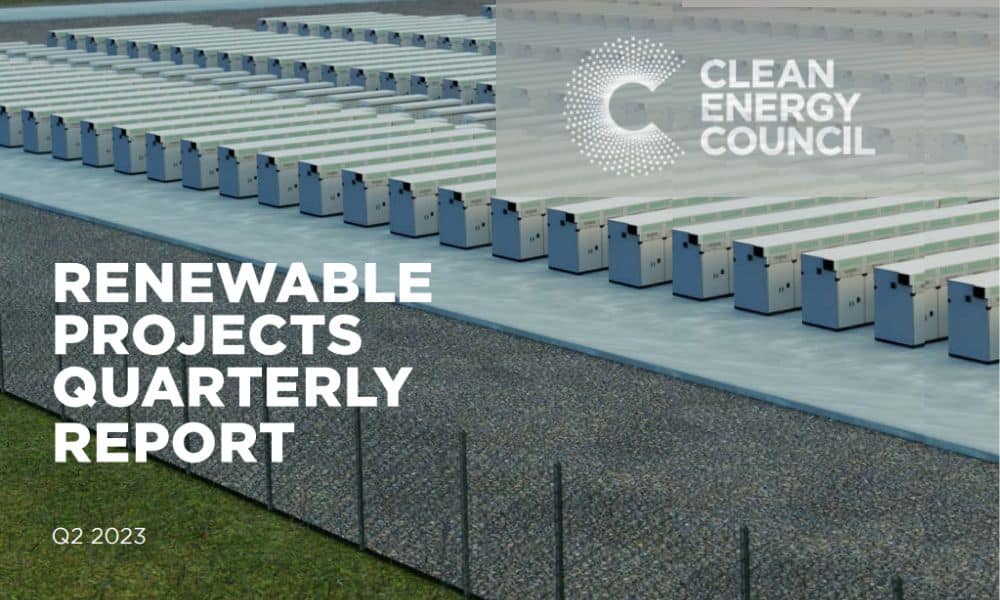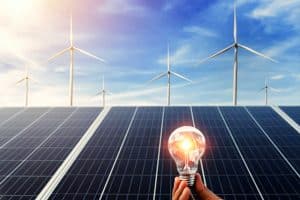The global shift towards sustainable and renewable energy sources has gained significant momentum in recent years, with countries worldwide striving to reduce their carbon emissions and transition to cleaner energy alternatives. Australia, known for its vast natural resources and abundant renewable energy potential, has been a frontrunner in adopting and promoting clean energy technologies. The Clean Energy Council, a prominent industry body in Australia, regularly releases its Renewable Projects Quarterly Report, which provides valuable insights into the current state and progress of the nation’s renewable energy sector, such as Australian wind and solar projects, especially in solar battery storage investments.
Are you looking to save money on your electricity bills and reduce your carbon footprint? Solar energy is the perfect solution! Energy Matters can help you get up to 3 FREE quotes from pre-qualified and vetted solar firms in your area.
Energy Matters has been a leader in the renewable energy industry since 2005 and has helped over 40,000 Australian households in their journey to energy independence. With Energy Matters, you can be sure you’re getting the best possible deal on solar energy. We only work with reputable solar firms with a proven track record of delivering high-quality solar systems.
Key findings of the CEC renewable projects report
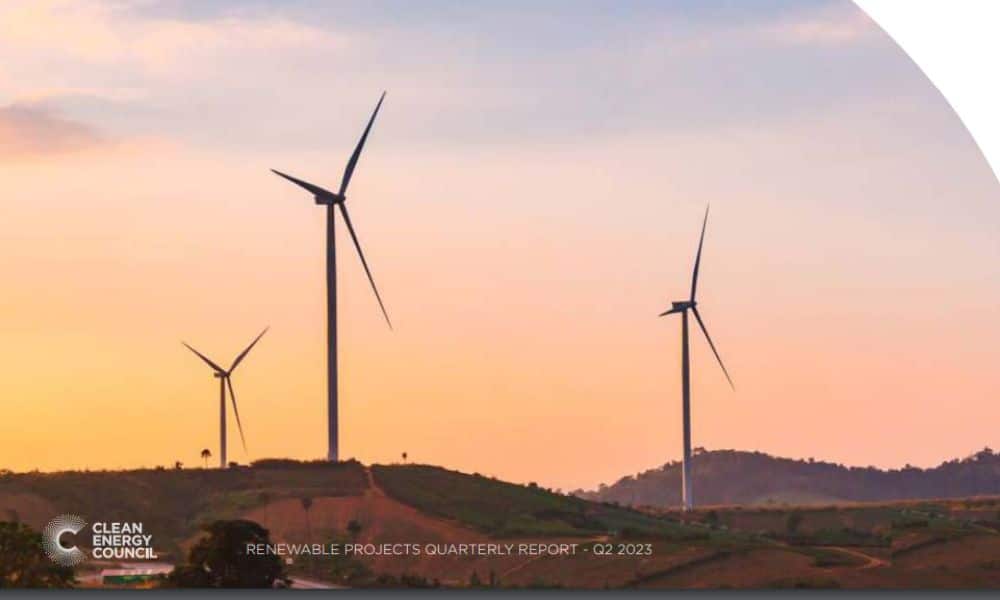
The Clean Energy Council’s Renewable Projects Quarterly Report Q2 2023 shows that investment in energy storage projects in Australia has reached record levels, while investment in generation projects has slowed.
New investment in big batteries smashes records in Australia
In Q2 2023, $2 billion worth of storage and hybrid projects reached financial commitment, breaking the billion-dollar barrier for the first time. This was an increase of $512.5 million (+236 per cent) compared to the previous quarter.
All three large-scale storage projects that reached financial commitment during the quarter received funding or concessional financing from a government body. This suggests that government support is key in driving investment in energy storage in Australia.
The strong investment in energy storage is being driven by a number of factors, including the increasing intermittency of renewable energy generation, the need to improve grid stability, and the growing demand for batteries for electric vehicles.
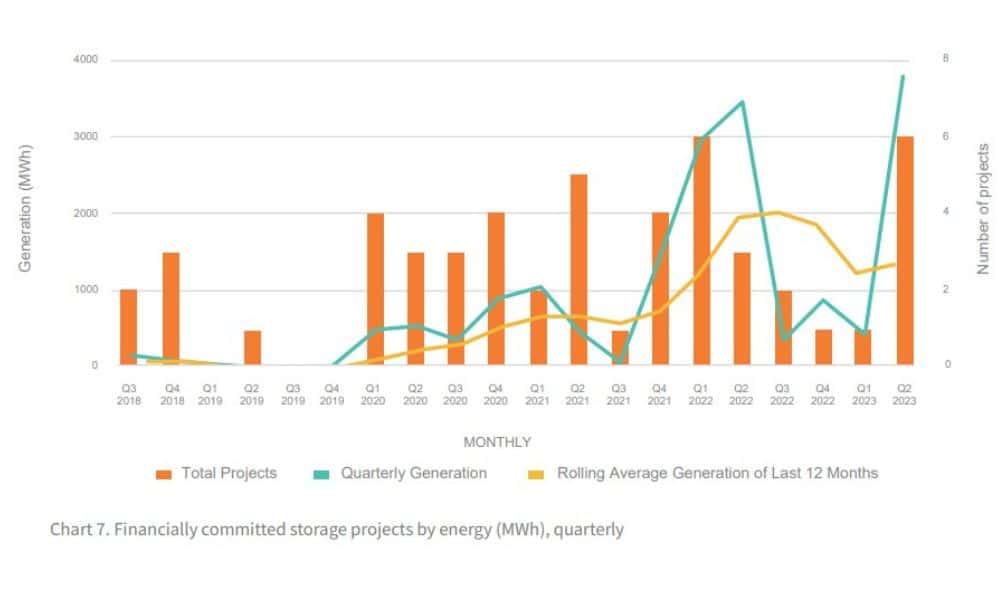
This investment boom is being driven by a number of factors, including:
- The increasing cost-competitiveness of battery storage technology
- The growing need for grid stability and flexibility as more renewable energy is added to the grid
- The increasing demand for battery storage from businesses and households
Learn more about Solar Battery Buying Guide: How to Make the Right Decision.
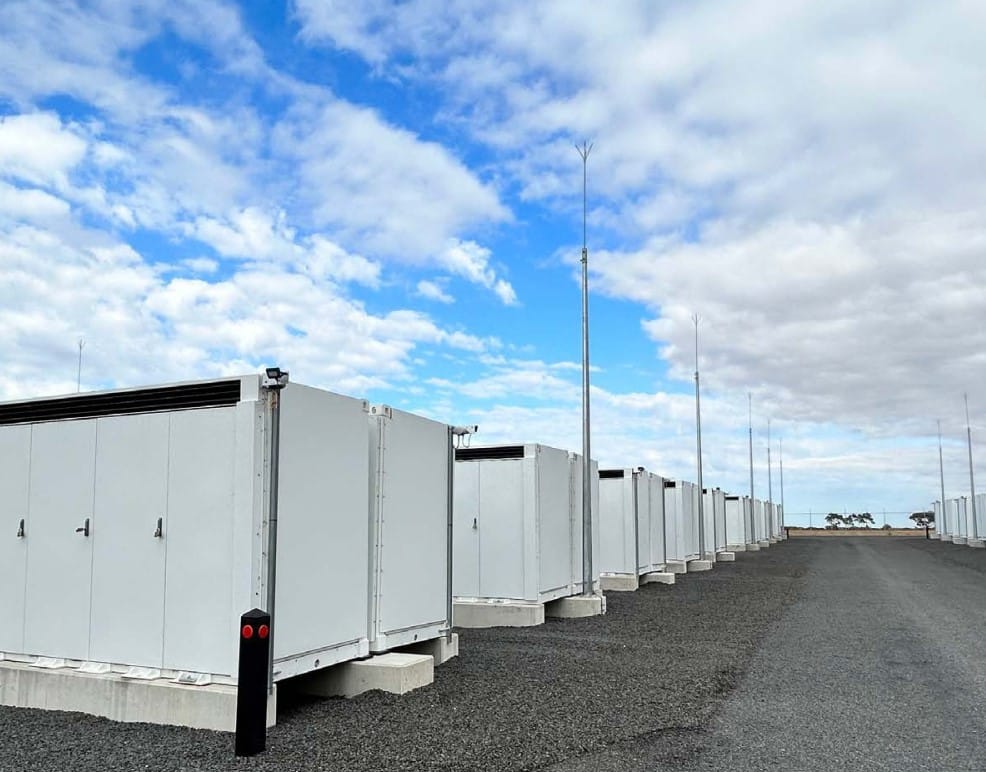
Lowest total generation capacity for the first half
Despite the strong investment in energy storage, investment in generation projects has slowed in recent quarters. In Q2 2023, only four generation projects reached financial commitment, totalling 348 MW of generation capacity. This is 50 per cent below the rolling 12-month quarterly average (on a capacity basis) of 699 MW.
The slowdown in investment in generation projects is being attributed to a number of factors, including the rising cost of renewable energy projects, the uncertainty surrounding the future of the National Electricity Market, and the need for clear policy support from the federal government.
Solar projects go from the financial commitment to the final commissioned stage in 6.2 months, a shorter time than wind projects. South Australia tops all other states regarding solar and wind project commissioning, which takes an average of 15.6 and 21.3 months, respectively.

The Clean Energy Council calls on the federal government to provide more certainty for the renewable energy sector by implementing clear and stable policies. The Council also calls for increased energy storage investment, which is essential to a reliable and affordable renewable energy future.
Quotes attributable to the Clean Energy Council Chief Executive, Kane Thornton
“These challenges make final investment decisions for large scale renewables projects more difficult and include under-investment in transmission, grid connection challenges, inconsistent planning policies, constraints in supply chains and workforce as Australia competes with global leaders that are all accelerating their demand for renewable energy.
“There is an enormous pipeline of renewable energy projects in Australia, but investors are swamped with global opportunity at a time when these barriers make Australian projects less attractive.
“The critical development needed to achieve 82 per cent renewable generation by 2030 is not guaranteed unless we target the obstacles currently creating investment uncertainty for new energy generation.”
Some additional key findings from the report
- According to the project pipeline, five generation and storage projects started construction in Q2. In Q2, a total of nine projects with a combined investment of $1.3 billion reached the final commissioned stage.
- Four generation projects totalling 348 MW gained financial commitment in the third quarter, with the Ardandra Storage and Solar Project in Queensland being the largest.
- The states with the most investment in renewable energy projects in the quarter were New South Wales, Queensland, and Western Australia.
- The report’s findings suggest that Australia is progressing towards its renewable energy targets, but more must be done to accelerate the transition to a clean energy future.
Q2 2023 Project Tracker
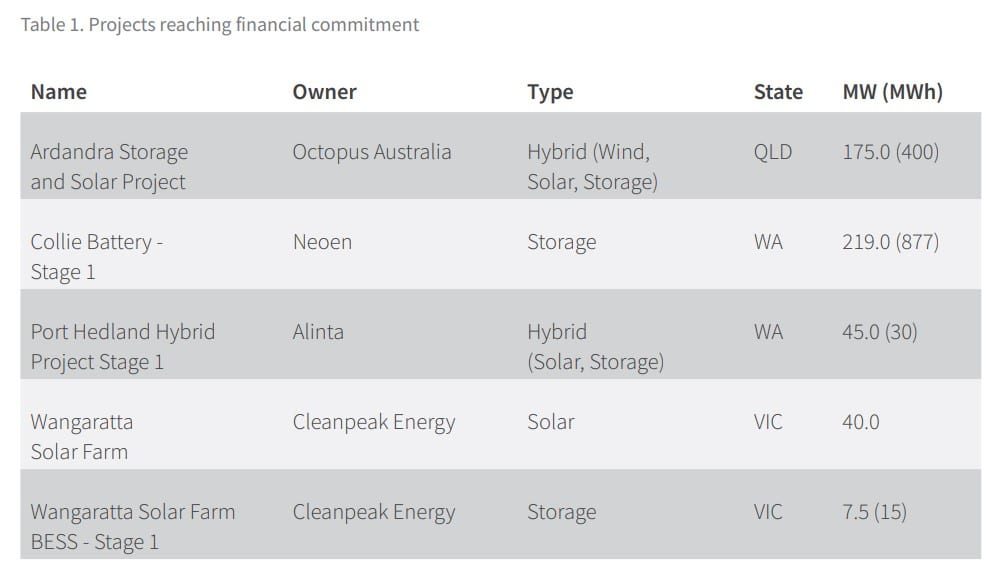
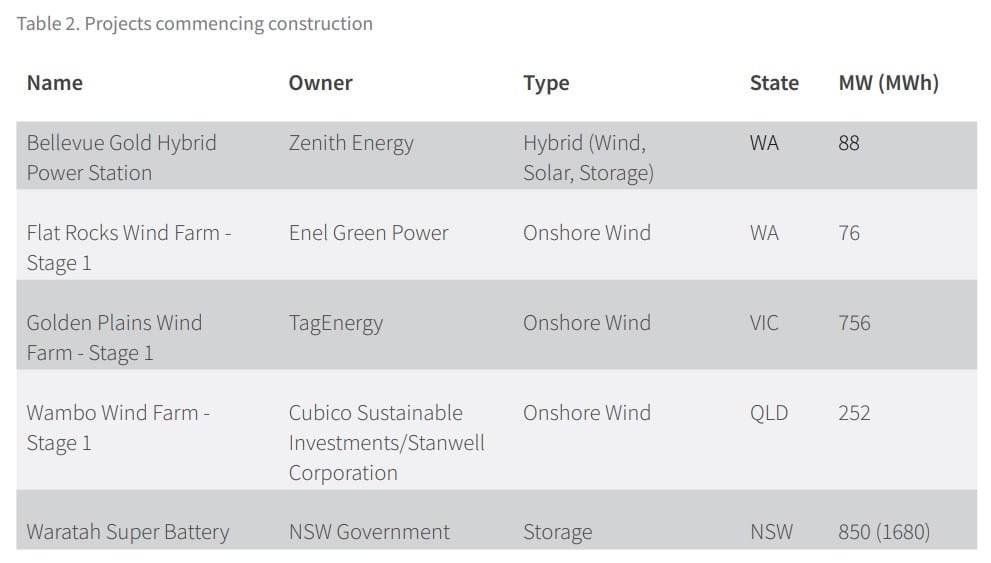
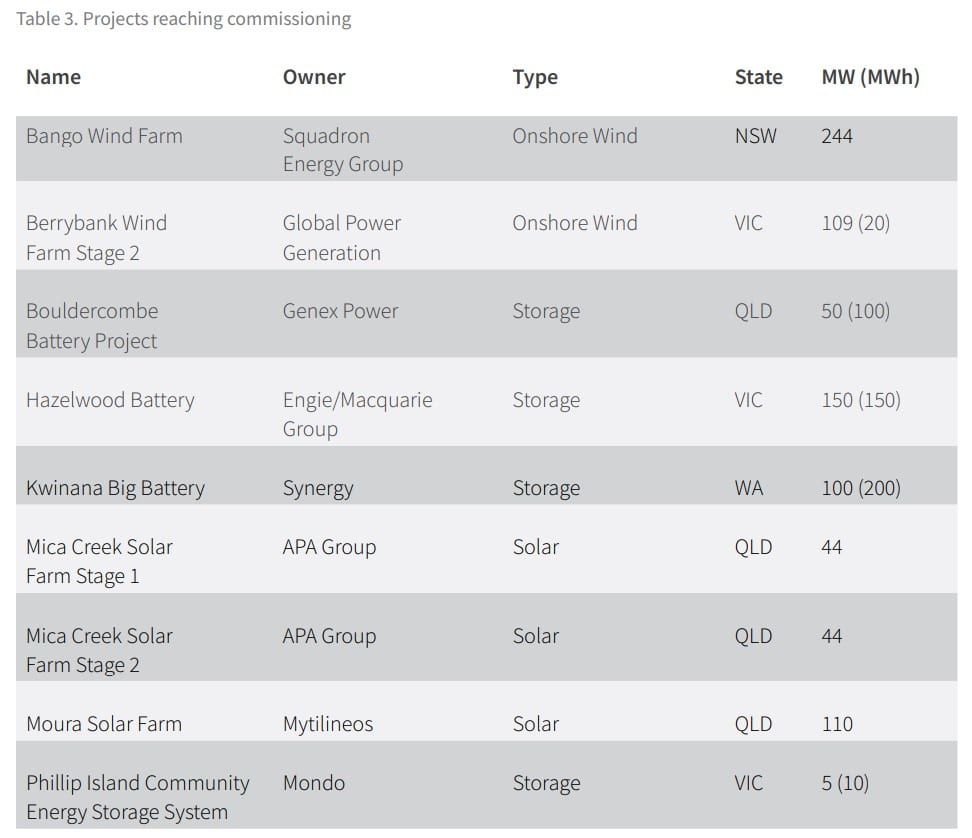
Source&Images: Clean Energy Council-Media Release 23 Aug 2023
Is solar energy suitable for your business? Solar energy has numerous advantages that are worth investigating. Investing in solar will minimise your operational costs, reduce your company’s carbon footprint, and prepare it for the future. A commercial property with a solar installation is excellent for business.
When installing commercial solar for a company, it is crucial to be informed of all types of federal government solar rebates, incentives and the many benefits these provide, as they may help Australian businesses become future-ready and sustainable for years to come.
Contact us today for up to 3 FREE quotations from commercial solar firms we’ve pre-qualified and vetted for their track record of delivering Australia’s best business solar systems.
The Australian renewable energy sector is still growing and adapting to the changing solar energy landscape
The Clean Energy Council’s Q2 2023 Renewable Projects Quarterly Report shows that investment in energy storage projects has reached record levels. Storage projects can help to balance the grid and make it more reliable, and they are essential for integrating large amounts of variable renewable energy like solar and wind power.
However, the slowdown in investment in generation projects is a cause for concern, and it is important for the Federal Government to provide clear and stable policy settings to support the continued growth of the sector.
The report’s findings suggest that the Australian renewable energy sector is still growing, albeit slower than in previous years. The increase in investment in storage projects is a positive sign, as it shows that the industry is adapting to the changing solar energy landscape.
In Australia, the cost of electricity is relatively high so solar batteries can be a good investment for many homeowners and business owners. The Australian government also offers several rebates and incentives for solar batteries, which can further reduce the installation cost.
So, the answer to this question depends on several factors, including the cost of the battery, the cost of electricity in your area, and your energy consumption habits. In general, solar batteries are becoming more affordable, and the cost of electricity is rising. This means that solar batteries are becoming a more attractive investment for many Australians.
A study by the Australian Renewable Energy Agency found that it takes about 1 square kilometre of land to generate 1 megawatt of electricity from a coal-fired power plant, but only about 0.06 square kilometres of land to generate the same amount of electricity from a solar PV plant and 0.1 square kilometres of land to generate the same amount of electricity from a wind turbine. This means that wind and solar power can generate the same amount of electricity as coal power while using up to 16 times less land.
Still can’t afford to switch to solar power?
Are you considering getting solar panels but are currently short on funds? You can still invest wisely, and Energy Matters can help you.
Powow and Energy Matters have teamed up to provide consumers with an alternative to switching to solar power and battery storage.
The biggest obstacle to installing solar and battery storage is typically finance. With Powow’s PPA and VPP, our customers will have a $0 upfront option and financial stability in the uncertain energy market.
Get up to 3 obligation-free quotes by getting in touch with us right away. Find out what payment plan options suit your needs and budget!











